
National Wildlife Week: Play Wild and Connect with the Wonders of the Natural World
April 4, 2023National Wildlife Week is here, and it's time to celebrate all things wild and natural! This year's theme is "Playing Wild Across America," and we are excited to share with you some of the amazing animals and habitats that are essential for a healthy planet. At Mystic Aquarium, we are passionate about promoting the conservation of wildlife and their habitats. From the ancient living fossils to the underwater playgrounds, we are highlighting the importance of these wild animals and spaces and the threats that they face.
Mystic Aquarium has a comprehensive program designed to protect and conserve wildlife and their habitats. We work with various organizations and communities to promote education, research, and conservation. We are committed to protecting the endangered species, rehabilitating injured wildlife, and fostering awareness about conservation and sustainability.
Here are some of the animals (and a habitat) we are committed to protecting. Learn more about what Mystic Aquarium is doing to keep playing wild, and how YOU can get involved too!
Horseshoe Crabs
Horseshoe crabs have been “playing” around for more than 300 million years, making them even older than dinosaurs. These living fossils are known for their horseshoe-like appearance and unique blood that has life-saving properties! But exploitation and habitat loss threaten the species, which is why Mystic Aquarium monitors their numbers and is helping bolster their populations in local waters. We conduct horseshoe crab population studies in the waters of Long Island Sound and have an aquaculture program where we are working to hatch and release juvenile horseshoe crabs. You can become a citizen scientist and help the horseshoe crabs by joining our tagging and monitoring program!

Amphibians
Amphibians are important indicators of environmental health. They are sensitive to changes in their environment and are among the first animals to respond to degradation in environmental health. They are also vital parts of the ecosystem, both as predators and prey. But there is a threat to amphibian throughout the United States: a deadly fungal infection called Chytridiomycosis. Chytridiomycosis has already caused the decline or extinction of over 200 species of frogs and other amphibians throughout the world. Scientists are trying to figure out how the disease spreads and why it affects some animals more than others. That’s an area where Mystic Aquarium is focusing, and something that you can become involved in too. We train citizen scientists to conduct amphibian surveys throughout the state and help collect samples that are tested for the fungus that causes Chytridiomycosis.
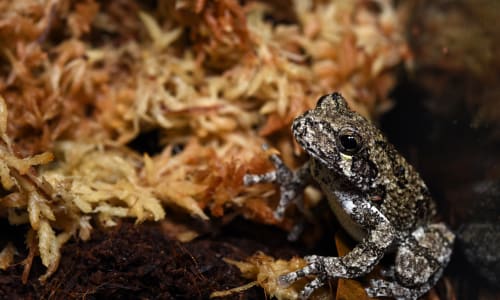
Spotted Seals
In the United States, spotted seals live, and play, in the icy waters of Alaska. They are one of four species of “ice seals” (also includes ribbon, ringed, and bearded seals) that rely on ice floes for survival. Climate change and loss of sea ice threatens the survival of spotted seals and all the ice seals. Mystic Aquarium is home to two female spotted seals, Siku and Nuna. They are both rescue animals that were rehabilitated in Alaska but were classified as non-releasable. When the call came that they needed a permanent home, Mystic Aquarium answered. All the seals and sea lions at Mystic Aquarium are rescue animals that needed a home, and we’re proud to be able to offer them a permanent residence where they receive world-class care and plenty of enrichment and interactions with other animals. Read more about the spotted seals at Mystic Aquarium.
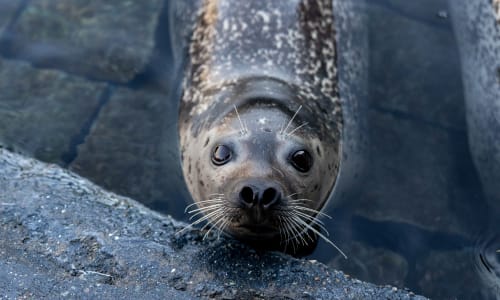
Beluga Whales
Belugas are known for their playful behavior. But the belugas at Mystic Aquarium aren’t just about fun and games…they’re helping their wild counterparts, including the critically endangered Cook Inlet population survive! The beluga whales at Mystic are given positive reinforcement that encourages them to participate in research. The Aquarium research team works with the resident belugas to test non-invasive methods to collect samples that can indicate the health of the whales. Once the team has determined the method works well, they can use it in the field to test the health of wild whales.
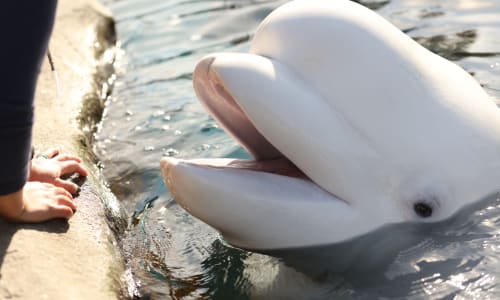
Sea Turtles
There are seven species of sea turtles and six of them live in U.S. waters. All seven species of sea turtles are classified as threatened or endangered. Each year, Mystic Aquarium helps rehabilitate stranded sea turtles, including endangered Kemp's ridley turtles, and releases them back into the ocean when they are healthy enough. A female Kemp's ridley turtle can lay thousands of eggs throughout her lifetime. So, saving even one turtle can make a difference to the survival of the species! Mystic Aquarium is also home to a green sea turtle, Charlotte. An injury paralyzed Charlotte’s rear flippers and left him with “bubble butt,” a condition where air is trapped under his shell affecting his buoyancy control. Although he looks a little strange swimming head-down in his habitat, he is thriving here at the Aquarium and is a guest favorite!
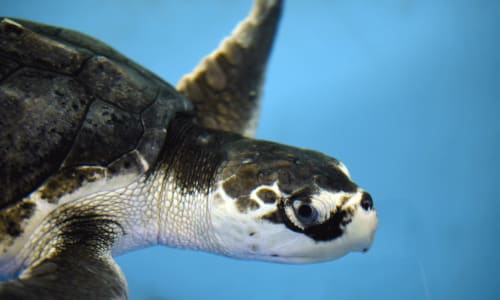
California Sea Lions
It’s hard to imagine an animal that takes playing more seriously than California sea lions. Their play behaviors include body surfing, wrestling, and games of chase. The California sea lions at Mystic Aquarium are rescue animals that are non-releasable, but they still play wild in our Marine Theater! California sea lion populations are stable, and although they are protected by the Marine Mammal Protection Act, they are not threatened or endangered. Still, when these sea lions strand and have conditions that prevent them from being released, Mystic Aquarium is one of the places they can come to live. Their trainers work with them daily, providing enrichment, ensuring their health, and giving them lots of love!

Canyons and Seamounts
The Northeast Canyons and Seamounts Marine National Monument is almost 5,000 square miles of underwater playground for marine wildlife such as deep-sea corals, whales and other marine mammals, sea turtles, and many fish species! This monument is one of the most pristine ecosystems in the world and is full of diversity. It’s home to at least 54 species of deep-sea corals, and endangered marine mammals, such as the sperm whale, are frequent visitors. Additionally, more than 10 species of sharks and countless fish species use this area as a feeding ground. With scientists still learning about the function and importance of these environments, it’s critical to protect them. Mystic Aquarium was instrumental in the monument’s designation as a Marine Protected Area. Now regulations and restriction of activities (such as commercial fishing) in the area will minimize human impacts.
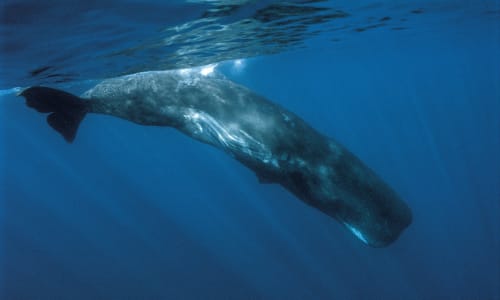
National Wildlife Week is an excellent opportunity to celebrate the wild and natural world, learn about the threats they face, and take action to protect and conserve them. At Mystic Aquarium, we are committed to playing wild across America, and we encourage you to join us in this important mission. Together we can make a difference and protect our planet for generations to come.
Here are some ways you can get help:
- Volunteer – Become a Mystic Aquarium citizen scientist, participate in habitat restoration efforts and beach cleanups, and support policies that protect our planet. This is an excellent way to make a difference!
- Donate - Every little bit counts, and your donations can go a long way in protecting wildlife and their habitats.
- Reduce your carbon footprint - Climate change is one of the most significant threats to wildlife and their habitats. You can reduce your carbon footprint by using public transport, cycling or walking, reducing energy consumption, and using sustainable products.
- Spread the word - Educate others about the importance of protecting wildlife and their habitats. Share information about conservation efforts and inspire others to act.